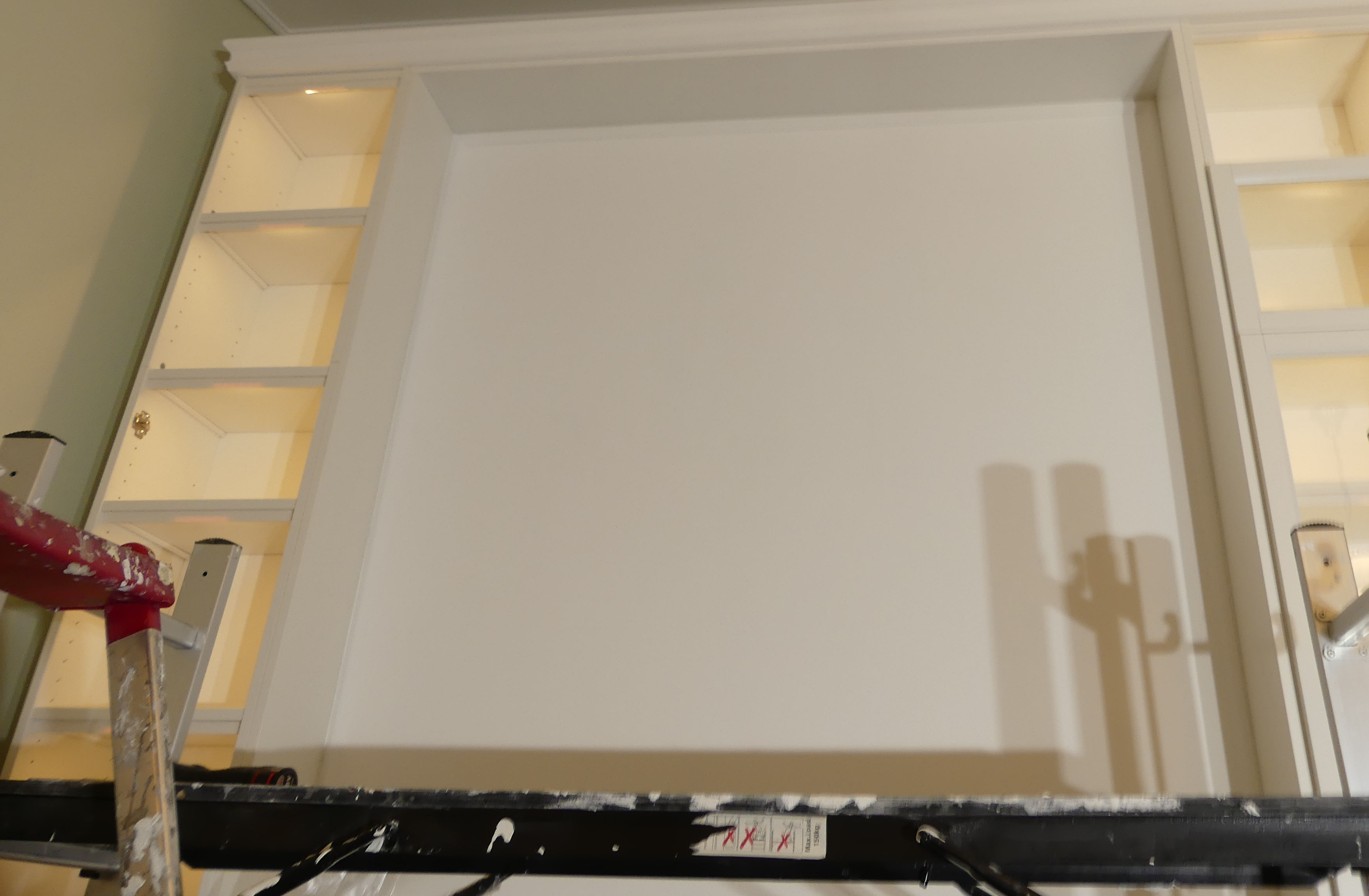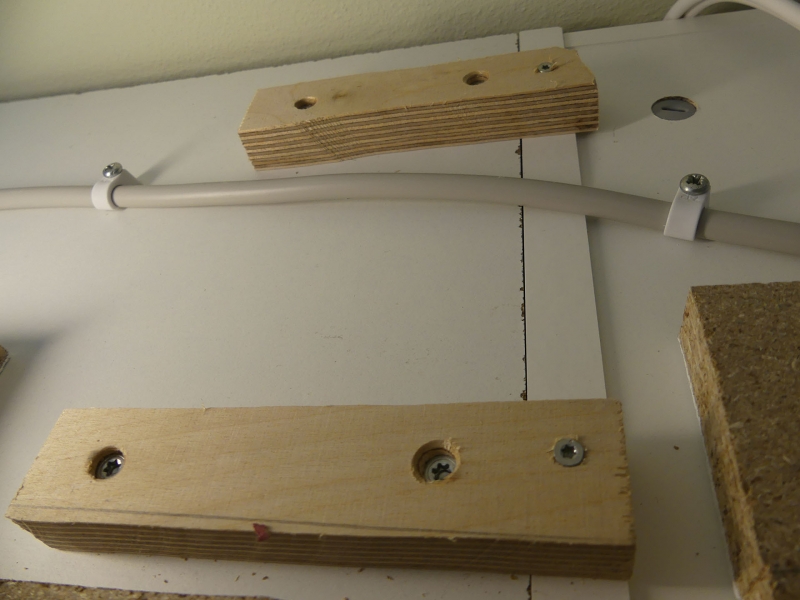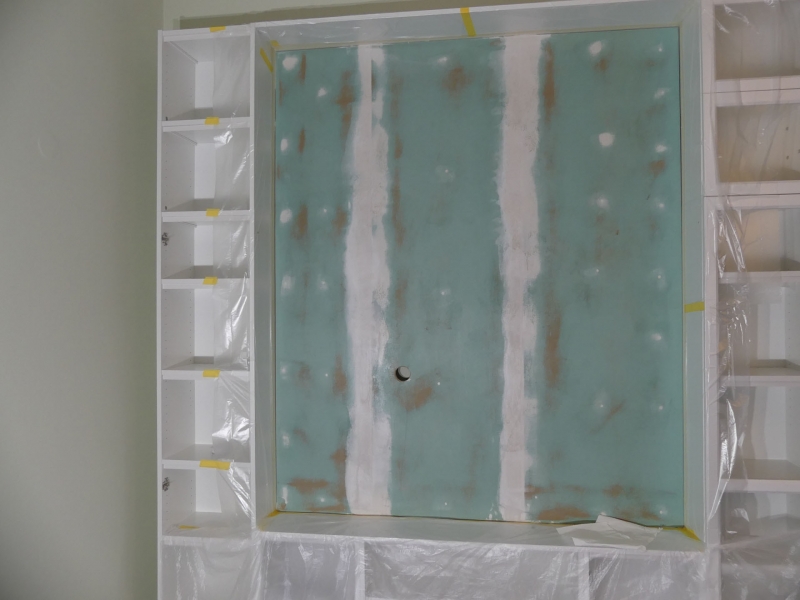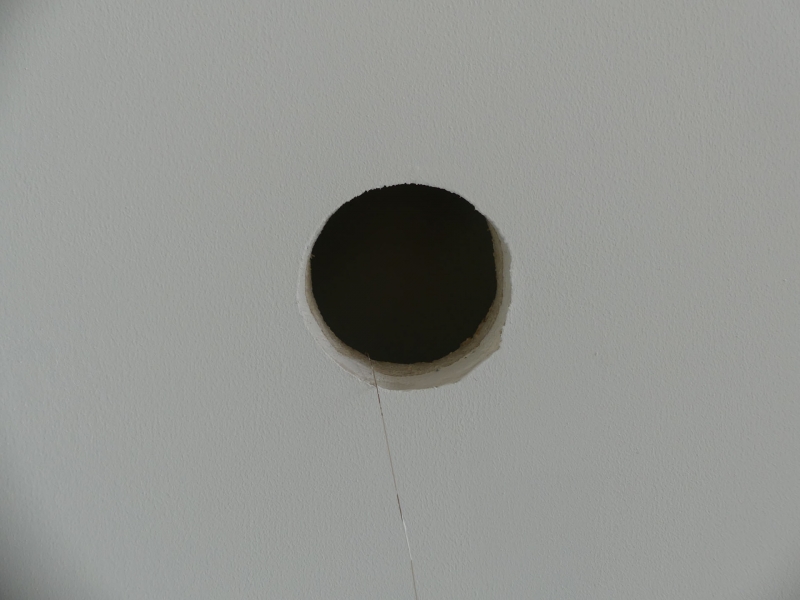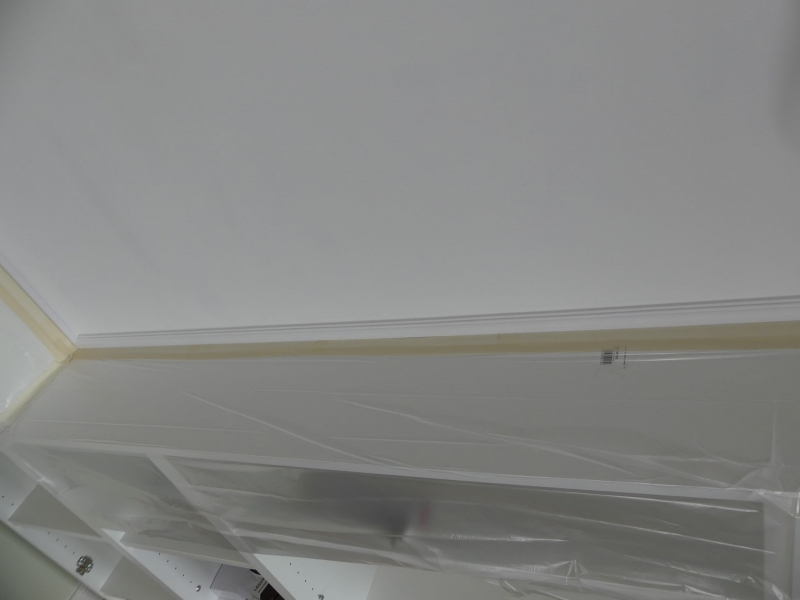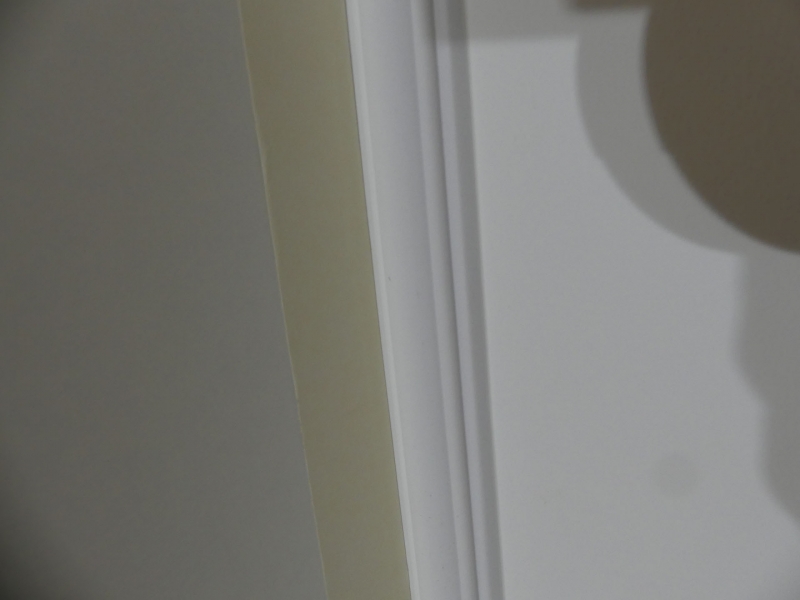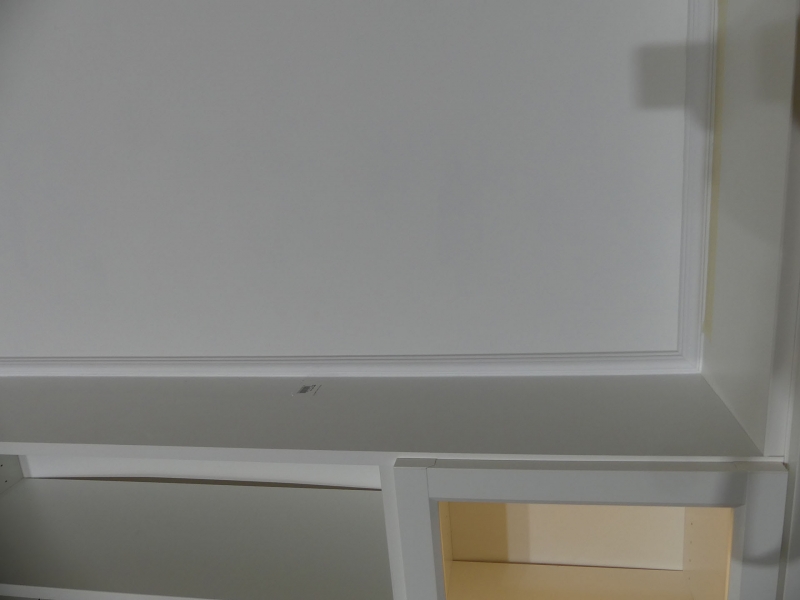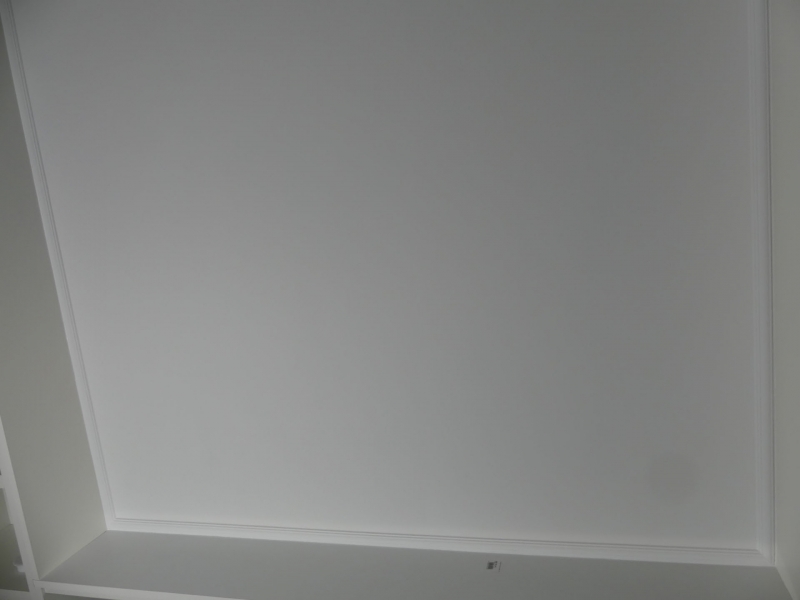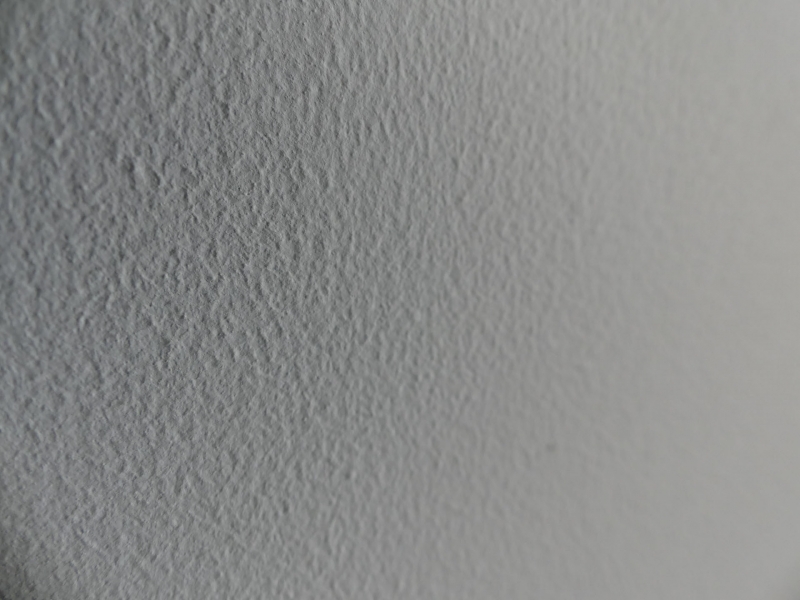After all Billy bookcases were connected to each other with furniture connectors it is time to close the niche. The top cover is a chipboard of 18 mm thickness. Two small cut-outs from a multiplex board are screwed before fitting on each side. With the help of the protruding blocks the lid can then easy be aligned. Finally, small screws are screwed from above through the blocks into the Billy bookcase sidewalls for fixation.
At the picture above you can already see the bookcase back wall with mounted chipboard upper end of the niche and the planked, spackled and sanded back wall. Unfortunately, some pictures have been lost due to a memory card crash. However, creating the back wall is very easy. First, bottom and top UD 28/27 profiles screwed on (a laser is also very helpful). Then the CD 60/27 profiles are shortened to length (tin snips) and set into the UD profiles (Note: the name of the drywall profiles may differ from country to country). After aligning the profiles, you can start with planking. In this case first with 18mm OSB boards to have a stable support for suspensions. On the OSB boards then plasterboard plates were screwed. It is the proven system of drywall construction. The green plasterboard would not have to be, but the local hardware store had no other. On the picture below you can see the already pre-painted back wall, which was previously treated with deep penetrating primer (after grinding and filling a must). In addition, a hole saw was used to create a cutout in which a cable feedthrough can be inserted (required for example for TV wall mounting). The cable outlet is only activated if necessary and later filled with compound.
Prior to the second wall coating , stucco profiles made of polyurethane were used all around to frame and cover smaller joints and connections on the back wall. Polyurethane profiles are hard and shock resistant and can be worked (sanded and trowelled) in a similar way to wood. For years I have ordered my stucco profiles from HEXIM at their online shop. There you will find the right wall and ceiling profile for almost every application and taste. In the application shown here, the stucco profile visually enhances the appearance of the niche.
After several strokes with a foam roller, the back wall is finally finished. Other paint rollers would add even more texture to the paint, which is undesirable. Maybe the niche will later be used as a projection screen for a projector. Therefore, rough structures on the wall are not desirable. The macro shot shows that even the foam roller leaves structures – this cannot be avoided but will be more than sufficient for a projection.
